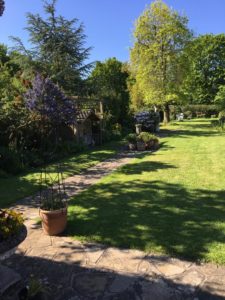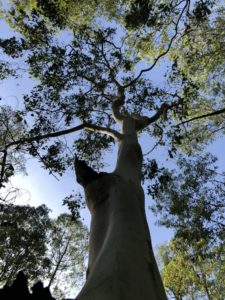Dear Toby,
This weeks article is on how to mindfully listen a bit better, to ourselves and others.
In the spirit of listening,
Toby
There is an old definition of meditation that is quite useful to consider:
“Prayer is talking to God, meditation is listening to God”.
If our mind is talking to itself all the time, how are we going to be able to listen to the intuitive wisdom, or the “still small voice” of our inner self as it offers us advice and support and in our life’s journey? Listening in a reflective, meditative manner is important for this reason. It is also important as a practise for helping us to develop our compassionate heart with other people. If, when we are with others, we consciously quieten our mind and really attend to what they are saying, often they will notice and appreciate what we are doing for them.
There is a book by Michael Ende called “Momo” that is about this power of listening. Momo is a little girl who is able to heal all those who come to her simply by deeply and attentively listening to the stories that they tell her about their life.
The second aspect of really listening to people is that we see more clearly where they are coming from, and so be much more likely to act in ways that are appropriate and helpful to both them and us. So, when you are with others, try and see your listening to them as a meditation, it will help both them and you!
I want to end this article by outlining three ways NOT to listen that I had drummed into me during my Tibetan Buddhist training, using the anlalogy of a pot:
Don’t be like an upturned pot
An upturned pot cannot receive any liquid into itself. Similarly, if we are not really listening (to ourself or others), we are like an upturned pot; nothing is going in!
Don’t be like a leaky pot
A pot with a leak cannot not hold what it liquid, it is useless. If we are not really paying attention, even if we hear what is being said, it simply “goes in one ear and out of the other” so to speak!
Don’t be like a bad smelling pot
You pour fresh juice into a dirty and bad smelling pot the fresh liquid becomes contaminated instantly. Similarly, if we are listening to someone, and there is a continuous negative inner commentary going on in our mind, this poisons everything that we are hearing. As George Michael once said (was it the title of one of his albums?) “Listen without prejudice”
Article © Toby Ouvry 2019, you are welcome to use or share this article, but please cite Toby as the source and include reference to his website www.tobyouvry.com
All Courses at Integral Meditation Asia
Ongoing on Wednesday’s, 7.30-8.30pm – Wednesday Meditation Classes at Basic Essence with Toby
Ongoing on Tuesday evenings, 7.30-8.30pm – Tuesday Meditation Classes at One Heart with Toby (East coast)
Wednesday 12.30-1.30 – Integral Meditation classes at Space2B on Stanley Street
Saturday mornings 9-10.15am, June 1st, 15th, 29th – Qi Gong workout and meditation class
FOR BEGINNERS: Saturday 15th June, 11-12.30pm – Get your meditation practice started now- The shortest and most time effective meditation workshop ever
Tuesday/Wednesday 18th&19th June – Summer Solstice balancing and renewing meditation
Saturday 22nd June, 2-5pm – Going From Over-whelmed to Over-well: Meditation for Quietening the Mind – a three hour workshop
Integral Meditation Asia
Online Courses * 1:1 Coaching * Books * Live Workshops * Corporate Mindfulness Training *Life-Coaching * Meditation Technology





 Unstructured mindfulness – Turning and facing yourself
Unstructured mindfulness – Turning and facing yourself



